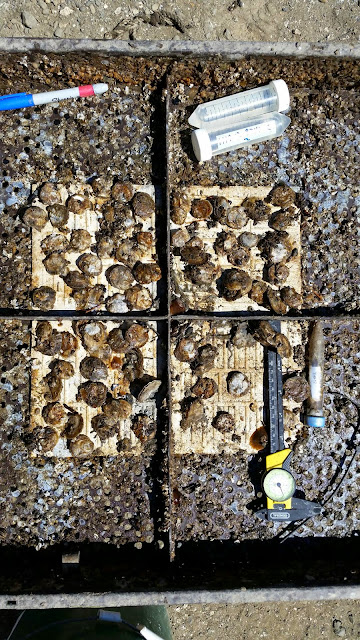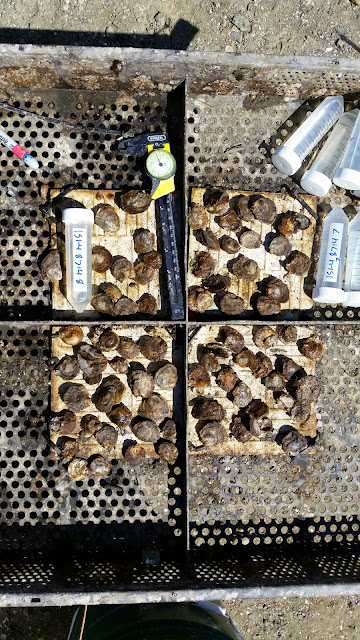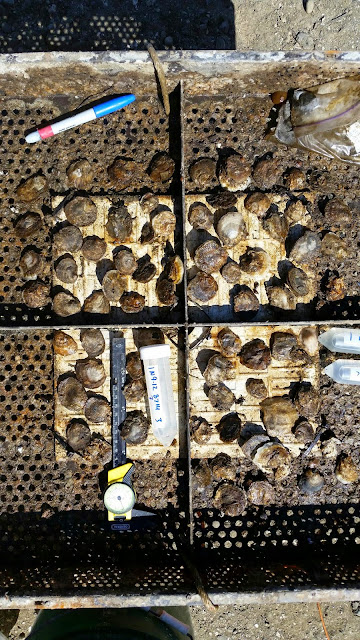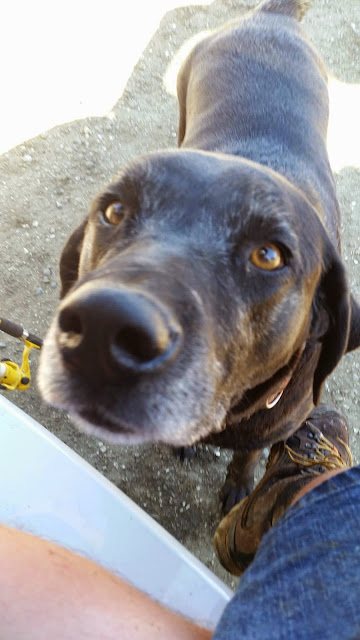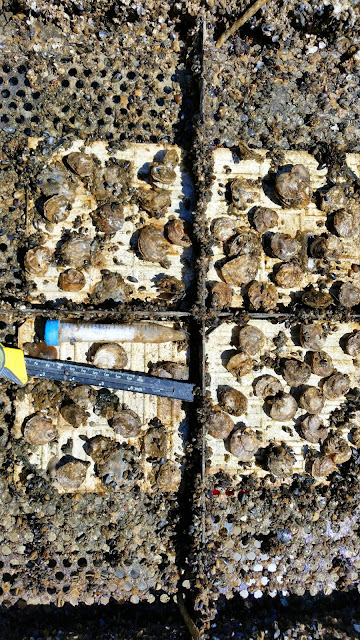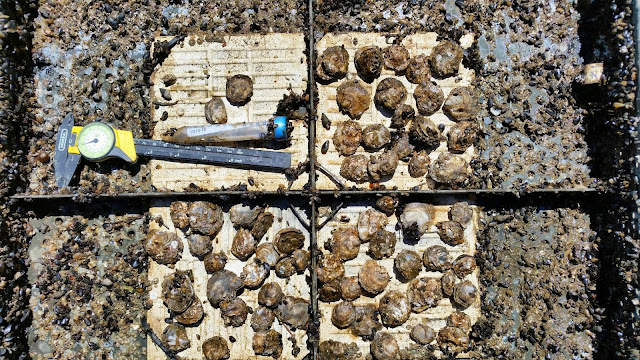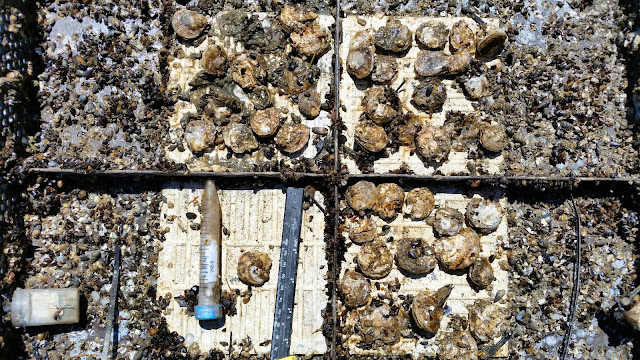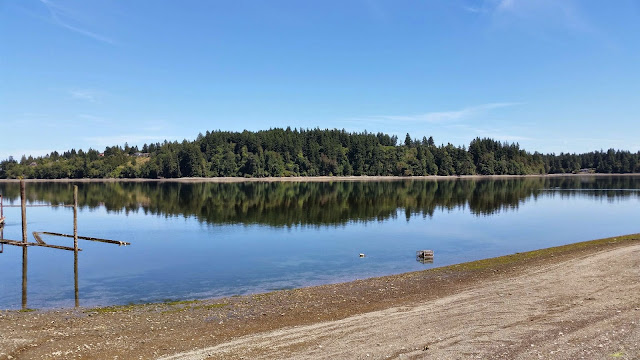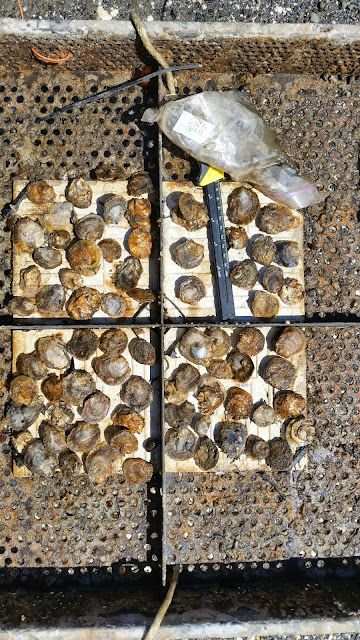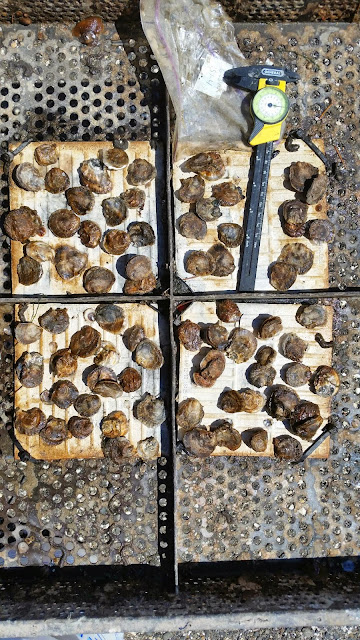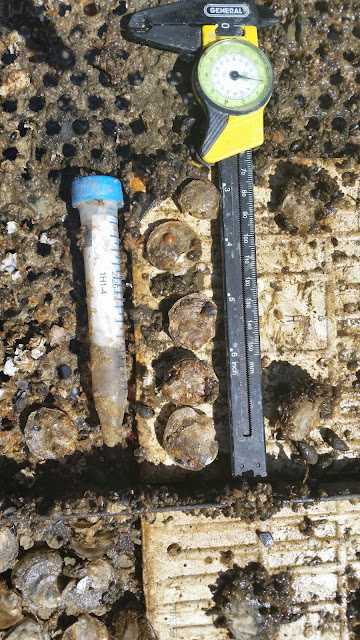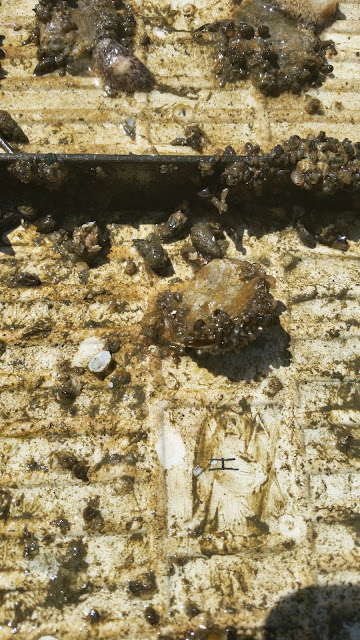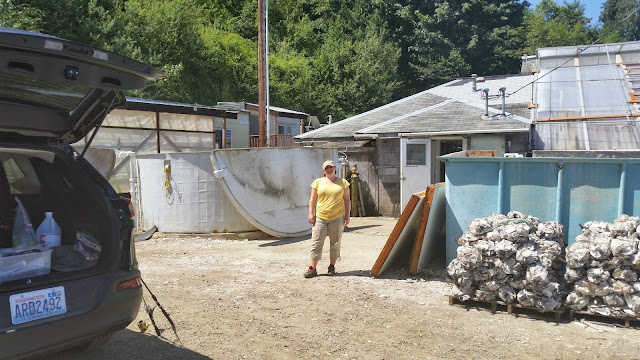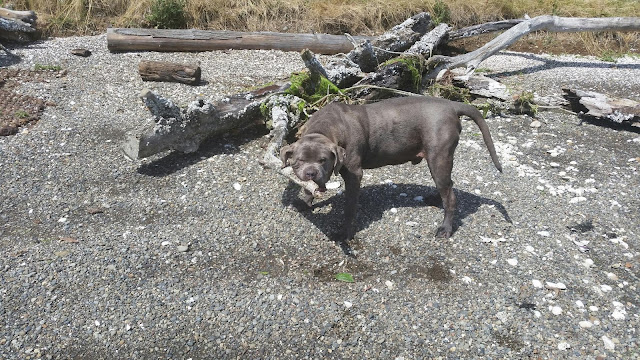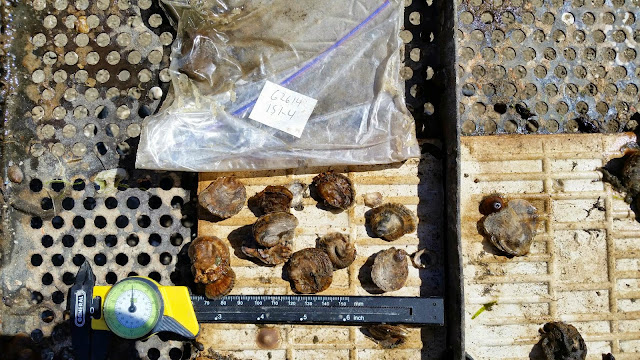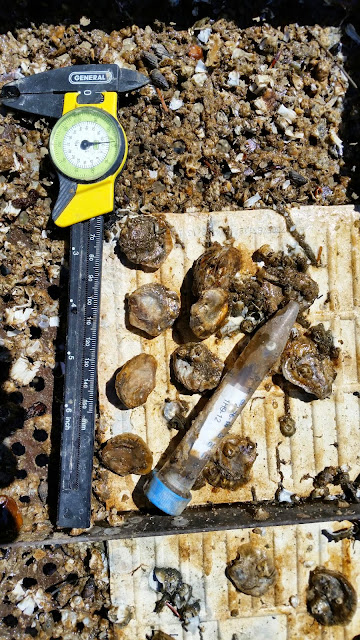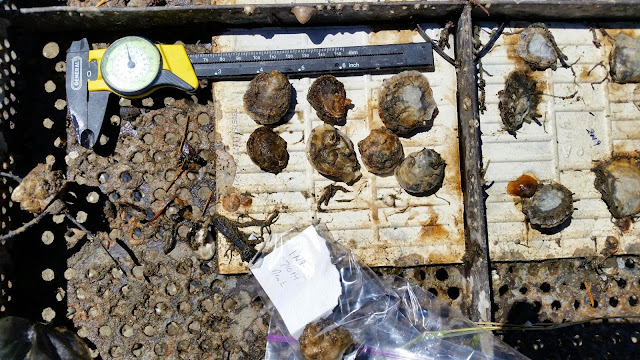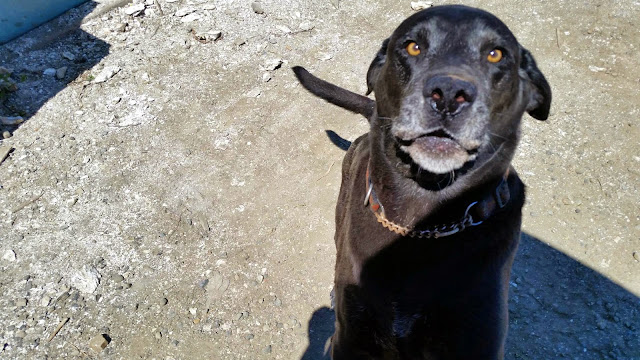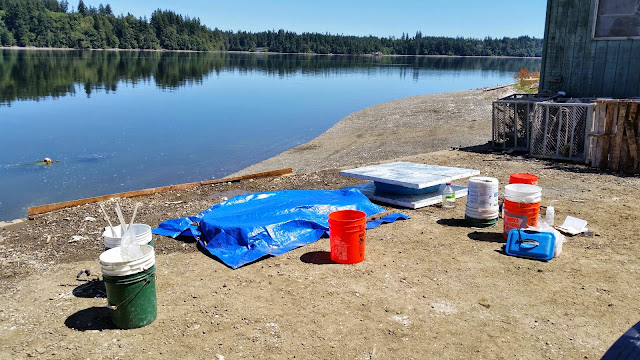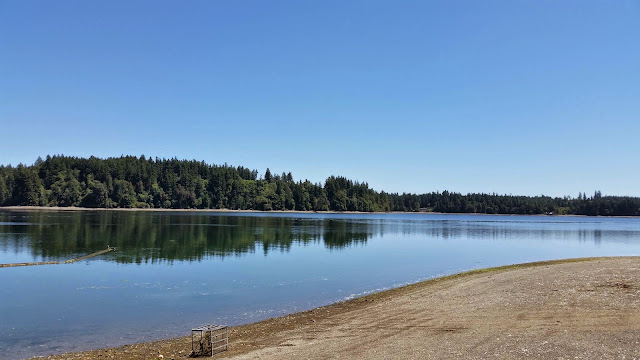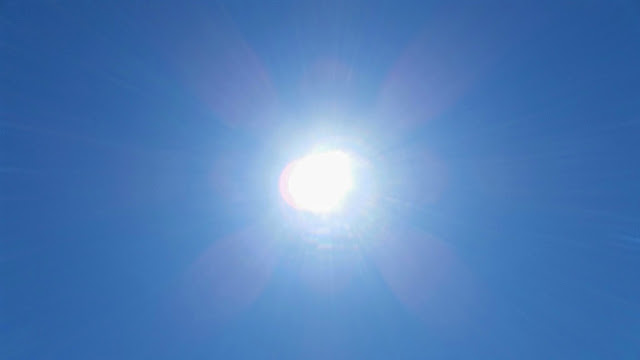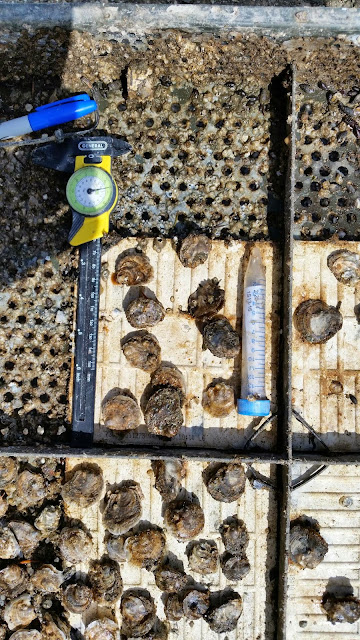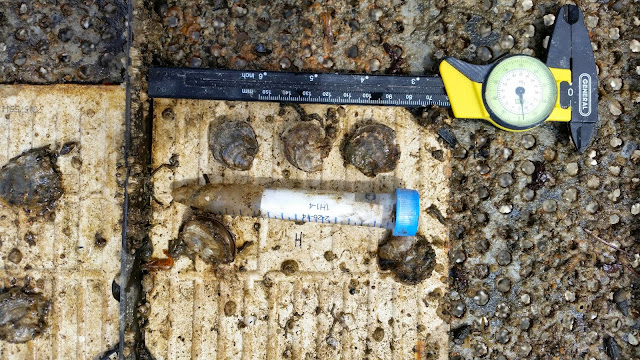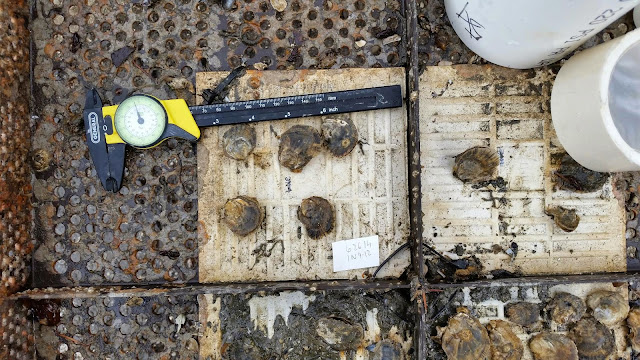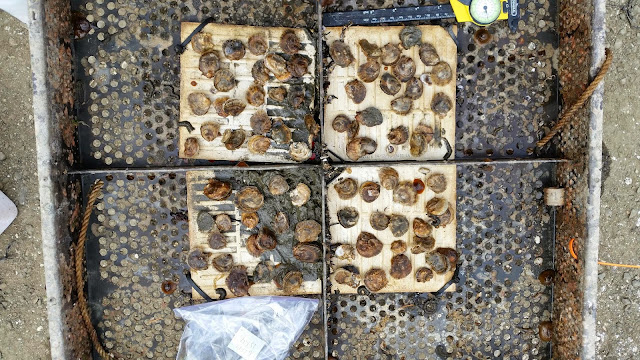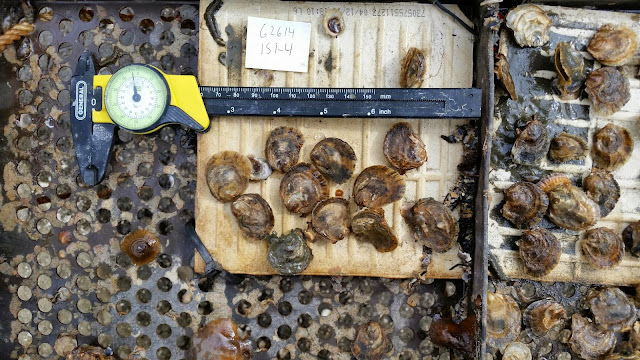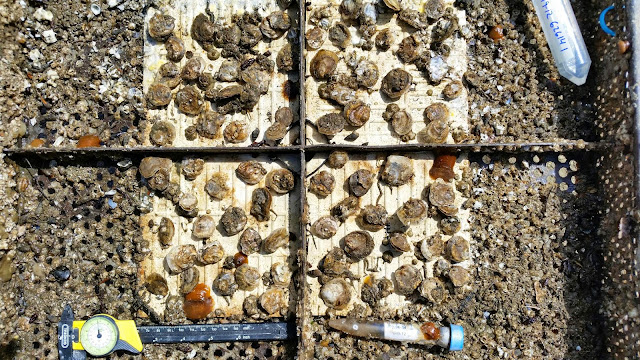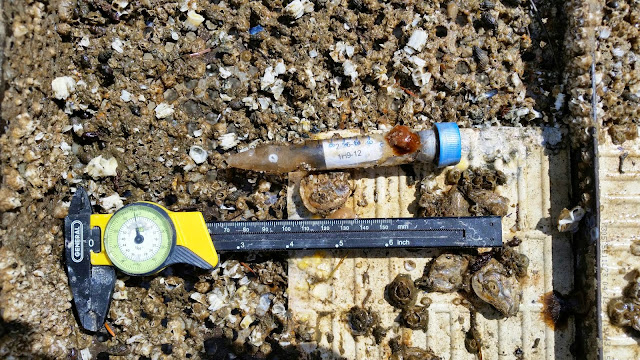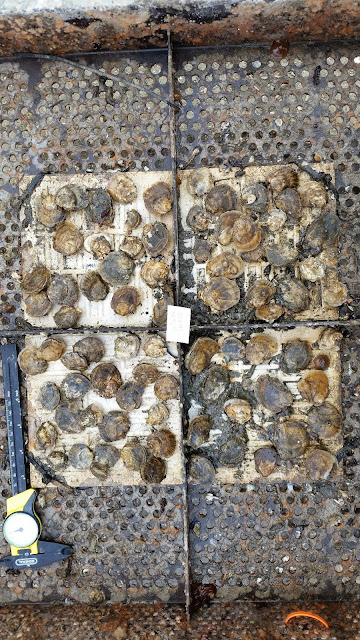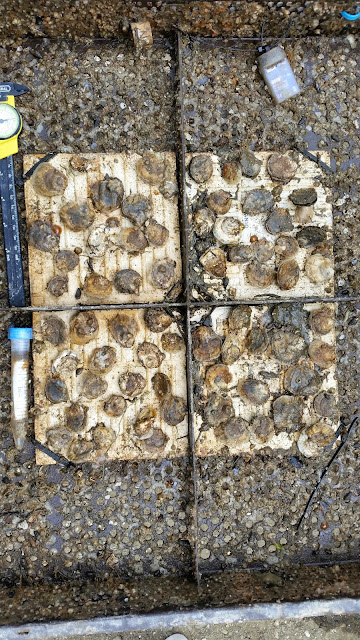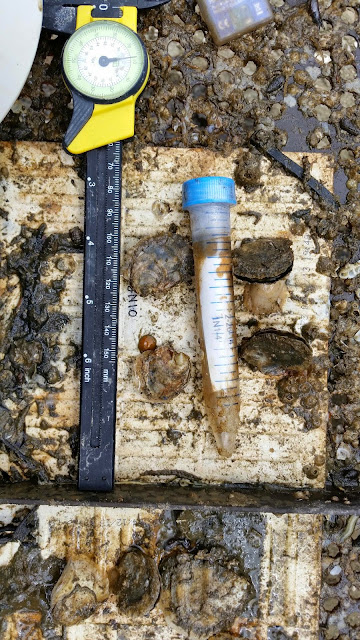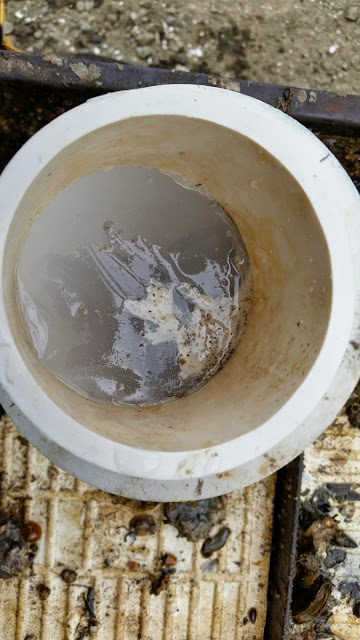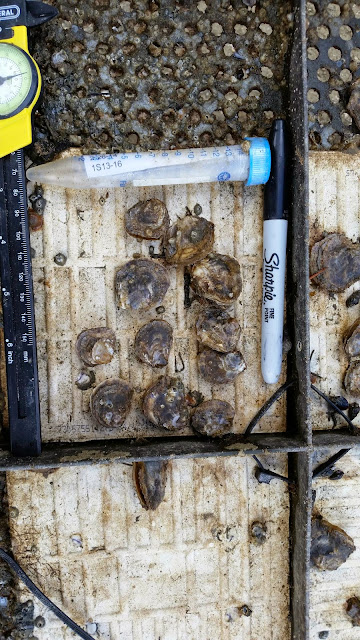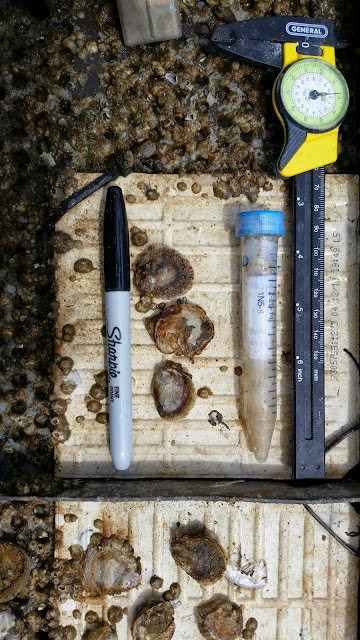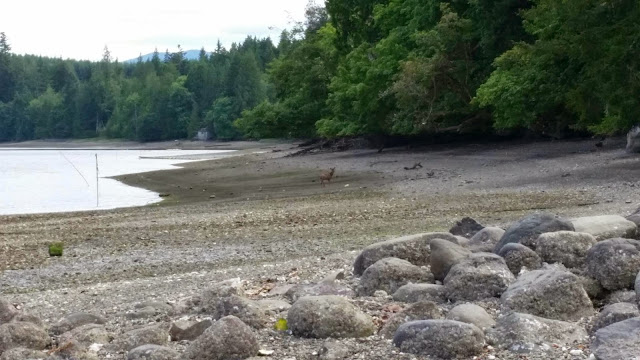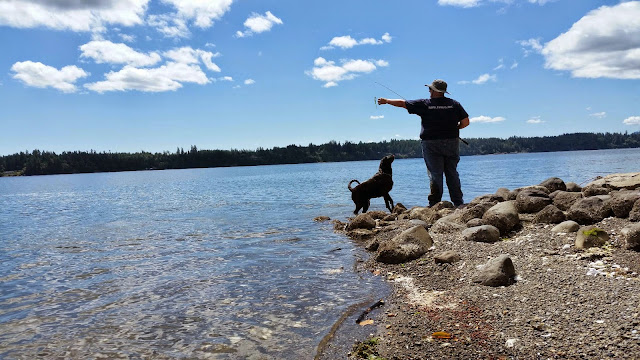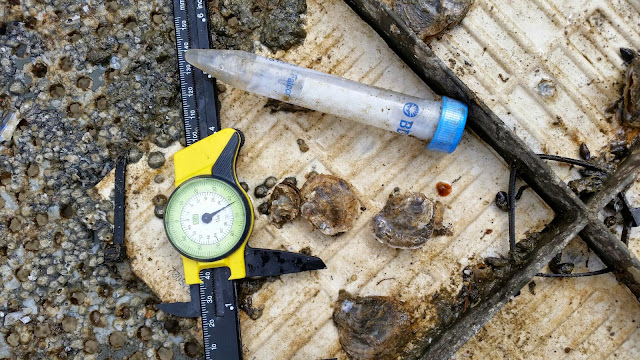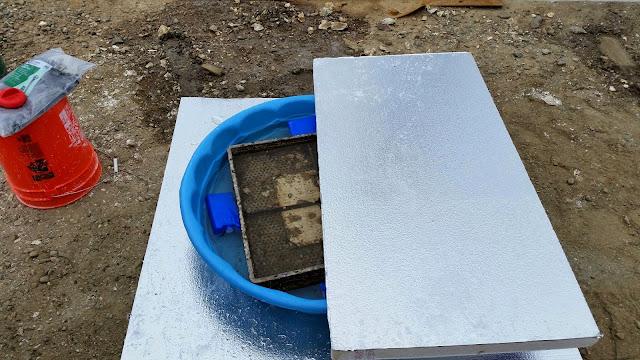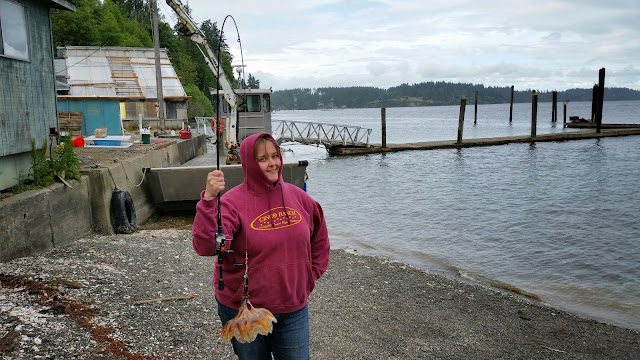Mid 60's to low 70s mostly cloudy
Performed the anesthesia SOP with insulation on the treatment tub. Weather permitted me to not have to use a tarp or ice blocks. There were no brooders in any population. This is due to the incredibly high innundation of mussels. I cleaned off 95% of the mussel and barnacle mass on the trays and oysters. Hopefully this will allow the animals to feed and reproduce freely. The fouling mass that I removed weighed almost 20 lbs. It was quite impressive. I suggest checking this tray again in September as well as having a general clean up for the other two trays since there would be a lot of mussels on them as well. Surprisingly there were no dead animals as well. I assume the mussels just inhibited reproduction but not feeding. Also relaunched the hobo logger that I thought was possibly damaged. It works fine as of Tuesday (8/12) so we'll check it in the future.
Numbers as follow.
Temps in C
Pretreatment
Initial 13
45 14
1.5 15
Treatment
Initial 11
45 10
1.5 11
2.25 11
Recovery
Initial 15
45 17
1.5 18
Salinity in ppt
Pretreatment 27
Treatment 72
Recovery 27
Brood Collection
1H1-4
Brood 0
Gaping 59
Dead 0
Closed 6
1S13-16
Brood 0
Gaping 65
Dead 0
Closed 5
1N5-8
Brood 0
Gaping 52
Dead 0
Closed 0
Pics have tube label and calipers on tile with closed animals. All other tiles are gaping.
 |
| This is what a summer of field work does to new boots. |




